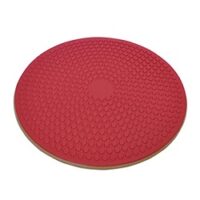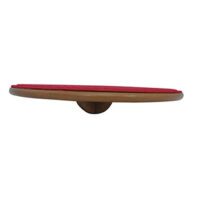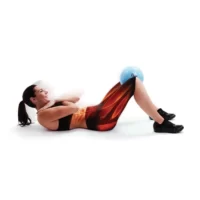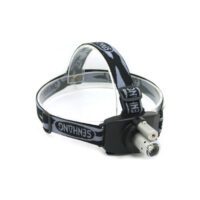Vestibular Rehabilitation Therapy
Article by Shane Armfield
Vestibular Rehabilitation Therapy (VRT)
Your Pathway to Balanced Living
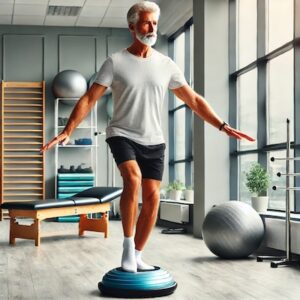
Why Choose Vestibular Rehabilitation Therapy?
Vestibular Rehabilitation Therapy (VRT) is a specialised branch of physiotherapy aimed at managing vestibular disorders. This therapy helps the brain find new pathways to regain balance, significantly reducing episodes of dizziness and vertigo.
How Does Vestibular Rehabilitation Therapy Work?
VRT employs customised exercises to retrain the brain to recognise and process signals from the vestibular system in the inner ear, along with visual and proprioceptive cues. These exercises enhance overall balance and stability.
What Are the Phases of Vestibular Rehabilitation Therapy?
- Initial Assessment
- A physiotherapist begins with a comprehensive evaluation of your symptoms, including tests to identify specific vestibular deficits.
- Read more about our assessment process
- Personalised VRT Treatment
- Following assessment, the therapist designs a targeted treatment regimen. This may involve gaze stabilisation to manage eye movements, balance training to improve steadiness, and habituation exercises to decrease dizziness.
- Discover how personalised treatment can help you
- Ongoing Maintenance
- After completing the treatment phase, you will transition to maintenance. Continue exercises independently to preserve and build on your treatment gains.
- Learn about ongoing maintenance for long-term success
Research Insights
Recent studies validate the efficacy of VRT. Research by Bruzell et al. (2019) indicates VRT’s success in reducing vestibular migraine symptoms and enhancing balance. Cousins et al. (2019) further support these findings, noting VRT’s superiority over medication in symptom management (Bruzzell et al., 2019; Cousins et al., 2019).
Patient Outcomes
Patients consistently report improved quality of life following VRT. This therapy is instrumental for those with vestibular migraines, providing relief and a pathway to regain control over their balance without relying solely on medication.
VRT in Action
VRT is not a one-size-fits-all treatment. It’s a dynamic, responsive approach, adjusting to the unique needs of each patient. Therapists monitor progress and tweak exercises as patients advance through their recovery journey.
Implementing VRT into Daily Life
Patient Empowerment
VRT equips you with the skills and confidence to manage your vestibular symptoms. The exercises integrate into daily routines, allowing for a seamless transition into a balanced lifestyle. Find out more about integrating VRT into your life
Conclusion: Embracing Equilibrium with VRT
Vestibular Rehabilitation Therapy (VRT) is a testament to the innovative strides in physiotherapy, offering hope and tangible results for those grappling with the disruptive effects of vestibular disorders. As research progresses, VRT continues to evolve, solidifying its role as an essential treatment modality.
What to Do?
If you’re experiencing symptoms of dizziness, imbalance, or vestibular disruption, it’s crucial to consult a trained physiotherapist with a special interest in vestibular rehabilitation. They will assess your condition, craft a tailored treatment plan, and walk alongside you on your journey to recovery. Book an appointment today.
Rochedale - Call 38410277
Book Online: RochedaleSalisbury - Call 32751044
Book Online: SalisburySandgate - Call 32691122
Book Online: SandgateVestibular Rehabilitation Therapy FAQs
1. Why is Vestibular Rehabilitation Therapy Important?
Vestibular Rehabilitation Therapy (VRT) is crucial because it helps retrain the brain to process signals from the vestibular system correctly, significantly reducing symptoms of dizziness and imbalance. This therapy can greatly improve the quality of life for individuals suffering from vestibular disorders.
2. How Does VRT Work?
VRT works by using customised exercises that focus on retraining the brain to interpret vestibular signals from the inner ear correctly. These exercises often include gaze stabilisation, balance training, and habituation techniques.
3. What Conditions Can VRT Help With?
VRT can help with a variety of conditions, including vestibular migraines, Meniere’s disease, benign paroxysmal positional vertigo (BPPV), and general balance disorders.
4. Who Can Benefit from VRT?
Anyone experiencing symptoms of dizziness, vertigo, or balance issues can benefit from VRT. This includes individuals with vestibular disorders as well as those recovering from head injuries or strokes.
5. Where Can I Get VRT?
VRT is available at vestibular-trained physiotherapy clinics. It’s important to seek out a physiotherapist trained in vestibular rehabilitation to ensure you receive the best care. Locate a clinic near you.
6. When Should I Start VRT?
It’s best to start VRT as soon as you notice symptoms of vestibular dysfunction. Early intervention can lead to faster and more effective recovery.
Related Articles
- Balance and Falls Prevention: Discover techniques to prevent falls and improve your balance.
- Physiotherapy for Dizziness: Learn how physiotherapy can help reduce dizziness.
- Meniere’s Disease Management: Understand the role of physiotherapy in managing Meniere’s disease.
- Benign Paroxysmal Positional Vertigo (BPPV): Get information on how BPPV can be treated with VRT.
- Migraine-Associated Vertigo: Explore treatment options for vestibular migraines.
- Balance Training Exercises: Learn exercises to improve your balance.
- Post-Concussion Physiotherapy: Discover how physiotherapy helps in post-concussion recovery.
- Gait Training: Learn about techniques to improve your gait.
- Falls Risk Assessment: Discover how to assess and mitigate fall risks.
- Vestibular Rehabilitation Therapy: Efficacy and Outcomes: Explore the efficacy and outcomes of VRT.
- Effectiveness of Vestibular Rehabilitation Therapy: Read about the effectiveness of VRT in various conditions.
- Systematic Review of Vestibular Rehabilitation: A systematic review of VRT’s impact on vestibular disorders.




